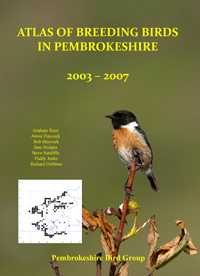Shelduck - 1994
 Thursday, December 15, 2011 at 10:22AM
Thursday, December 15, 2011 at 10:22AM Breeding resident and winter visitor.
Mathew (1894) noted breeding on the Cleddau Estuary and that it had been seen at Goodwick and Orielton, suggesting Shelducks were not common at that time. It now breeds in most parts of the Cleddau Estuary, with a few also on the Teifi, but no longer on the Nevem, a site included by Lockley et al. (1949). Shelducks bred on Caldey Island during the Breeding Birds Survey of 1984-1988 and on Skomer in 1969 and 1973 and they are occasionally seen flying inland during the breeding season. The average breeding population is estimated to be 50 pairs. Productivity is variable judging by duckling counts from the Cleddau Estuary, which averaged 137 young per annum from 1953 to 1955 but only 67 from 1983 to 1987. A census in 1991 revealed 79 ducklings (Hodges 1992).
Most of the adults leave the county to complete their moult migration during July. It is not known whether any of our birds moult in Bridgewater Bay, but there is a January ringing recovery from Pembrokeshire of an adult ringed in Germany in August, suggesting that some use the Heligoland Bight in the German Waddenzee.
Wintering birds begin to arrive in Pembrokeshire during November and build up to a peak in January and February. The average of the peak counts for the Cleddau Estuary from 1983 to 1986 was 1,340 birds, but 2,174 were counted there during the cold weather of January 1987. Shelducks are only occasionally seen away from the Cleddau, pausing briefly in coastal localities such as the Nevem Estuary, Fishguard Harbour and the offshore islands, and around 100 winter on the Teifi Estuary.

Fieldwork 1984-88 (based on 478 tetrads)
Red = breeding confirmed = 21
Orange = breeding probable = 10
Yellow = breeding possible = 13
Total tetrads in which registered = 44 (9.2%)


Reader Comments